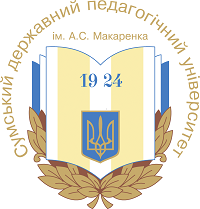THE PHENOMENON OF ALICE IN UKRAINIAN AND WORLD LITERATURE
DOI:
https://doi.org/10.32782/philspu/2025.11.22Keywords:
Alice, child-traveler archetype, intertextuality, initiation, alternate reality, cultural receptionAbstract
The character of Alice, created by Lewis Carroll in the novellas Alice’s Adventures in Wonderland and Through the Looking-Glass, is one of the most recognizable and iconic figures in world literature. At the same time, these texts have served as the foundation for the formation of a special cultural model – the archetype of the child-traveler who undergoes a rite of passage through a paradoxical world of imagination. The relevance of this study is determined by the global dissemination of Carroll’s ideas, motifs, and structures in numerous literary, cinematic, and media reinterpretations that not only preserve but also actively transform the original image of Alice in accordance with shifts in social, cultural, and historical contexts.The aim of this article is to comprehensively explore the phenomenon of "Alice-likeness" in contemporary artistic discourse and to determine how the character model, narrative structure, and spatial organization of the work are transformed in connection with the reinterpretation of the archetype. The research employs comparative-typological, archetypal, and intertextual approaches. The article analyzes similarities and differences in the narrative structure, the heroine's image, the organization of artistic space, and the system of trials in works that demonstrate an evident connection to the original. Key stages in the transformation of the child-heroine’s image are identified—ranging from the explorer of a paradoxical world to an emotional, moral, or historical fighter who embodies new models of self-awareness, fear, resistance, and strength. It is proven that the archetype of Alice as a traveler through imaginary reality has evolved into a universal artistic code, enabling reflection on the boundaries between reality and fantasy, childhood and adulthood, freedom and constraint. Contemporary variations of the heroine’s image not only reproduce but also expand upon its features, sometimes even contradicting the original concept, which indicates the vitality and adaptability of this archetype in new socio-cultural contexts.A promising direction for further study is the intermedial approach – examining the transformations of the Alice image in theatre, cinema, animation, and video games. The psychoanalytic perspective allows for an interpretation of the Alice archetype in terms of the unconscious, trauma, desire, and sublimation. The Alice phenomenon is not a relic of the past, but a dynamic platform for cultural dialogue that continues and takes on new forms.
References
Баум Ф. Чарівник з країни Оз. Київ : А-БА-БА-ГА-ЛА-МА-ГА, 2025. 120 с.
Ґейман Н.Кораліна. Київ : КМ-Букс, 2021. 192 с.
Керрол Л. Аліса в Дивокраї. Харків : КСД, 2020. 240 с.
Керрол Л. Аліса в Задзеркаллі. Харків : Фоліо, 2017. 160 с.
Малик Г. Незвичайні пригоди Алі. Київ : А-БА-БА-ГА-ЛА-МА-ГА, 2020, 224 с.
Функе К., Торо Г. Лабіринт Фавна. Харків: КСД, 2020. 240 с.
Юнг. К. Ґ. Архетипи і колективне несвідоме. Львів: Астролябія, 2018. 608 с.
Кембел Дж. Герой із тисячею облич. Київ : Альтернативи, 1999. 392 с.
Beddor F. The Looking Glass Wars. New York: Dial Books, 1985. 384 р.
McKinney L. L. A Blade So Black. New York: Imprint/Macmillan, 2018. 384 p.
Noon J. Automated Alice. London : Doubleday, 1996. 226 р.








